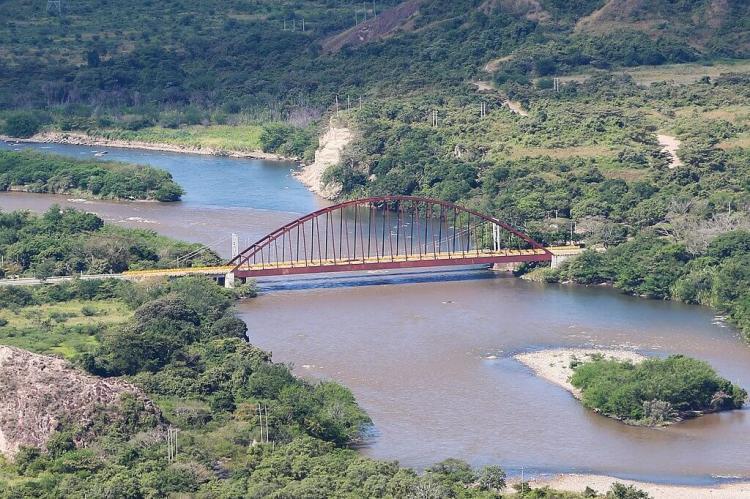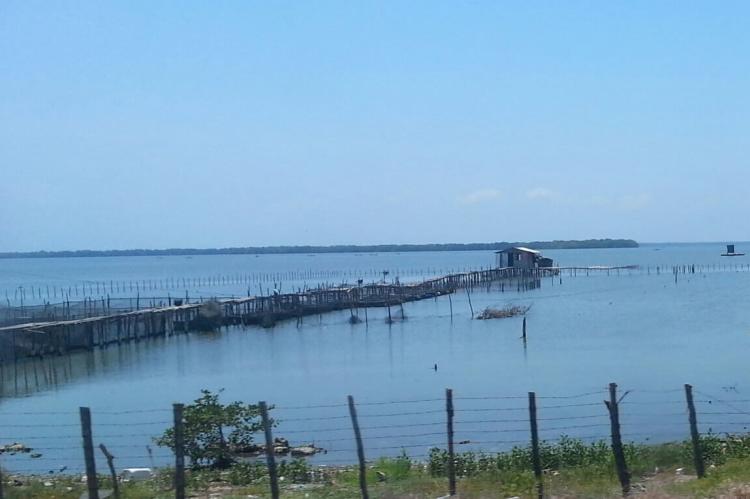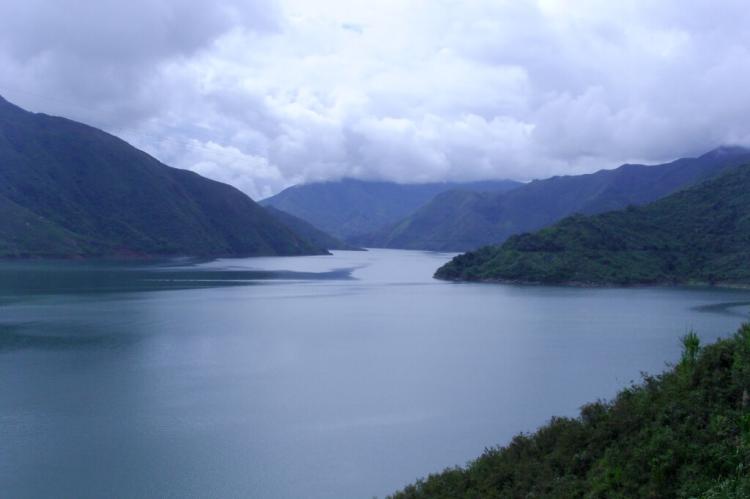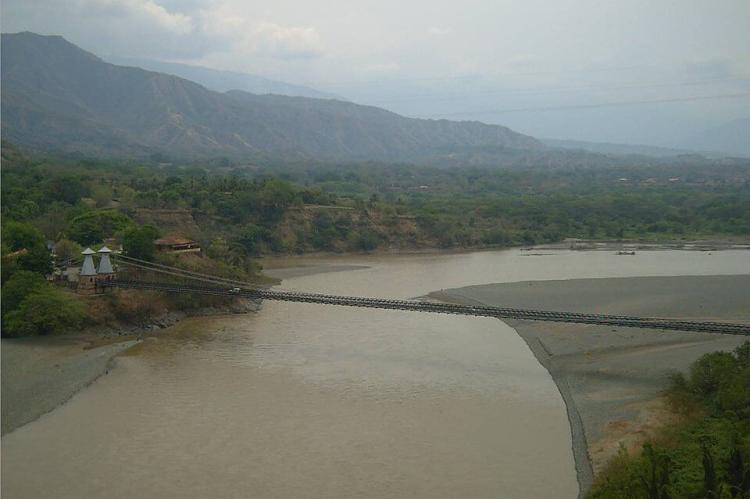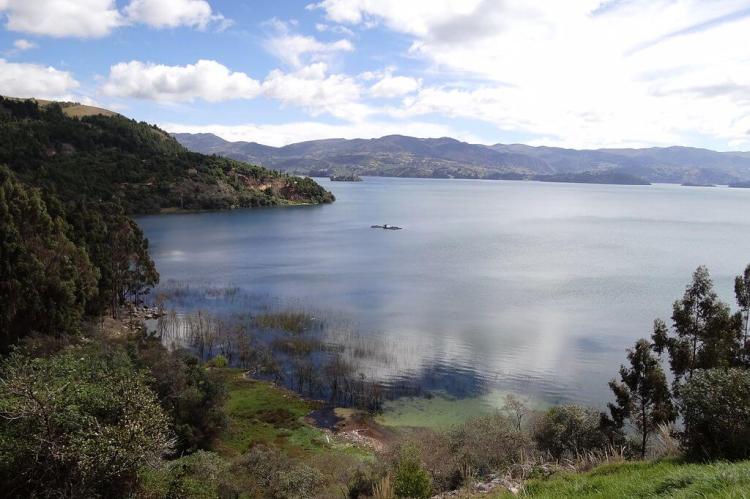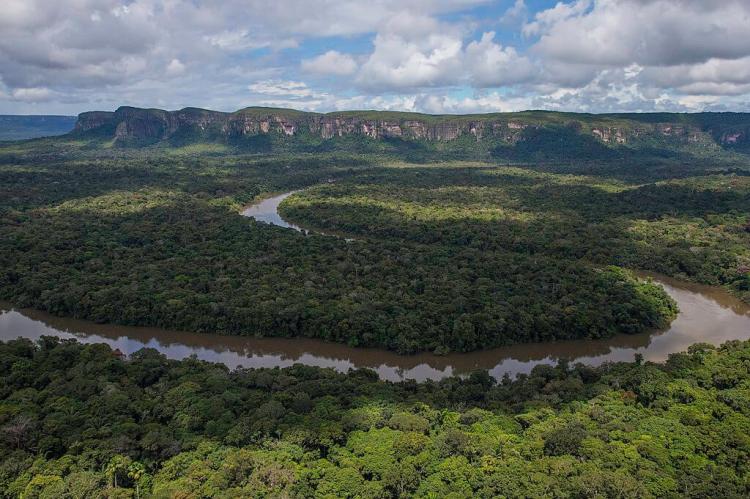Colombia's Water Bodies: An Exploration of the Nation's Diverse Aquatic Landscapes
Colombia is one of South America's most water-rich nations, with an extensive network of rivers, lakes, wetlands, and coastal waters shaping its landscape and culture. These waterways have historically served as corridors for settlement, trade, and providing for urban and remote communities.
Rivers of Life: Colombia's Vast Network of Waterways and Their Environmental Significance
Colombia stands as one of South America's most water-rich nations, blessed with an extraordinary network of rivers, lakes, wetlands, and coastal waters that shape both its landscape and culture. From the mighty Amazon tributaries in the south to the Caribbean coastline in the north, these aquatic systems support diverse ecosystems, provide essential resources for millions of people, and play crucial roles in regional and global climate patterns. The nation's strategic position at the northern gateway to South America, combined with its complex topography created by three Andean mountain ranges, generates a remarkable hydrological diversity that few countries can match. These waterways have served as corridors for human settlement, trade routes for economic development, and lifelines for both urban centers and remote communities throughout Colombia's rich history.
Geographic Context and Hydrological Framework
Colombia's unique geographical position gives rise to a complex hydrological system that spans multiple river basins and diverse climate zones. The country encompasses portions of five major river basins: the Amazon, Orinoco, Magdalena-Cauca, Caribbean, and Pacific systems. This diversity stems from Colombia's location at the intersection of South America's major mountain ranges, where the Colombian Andes divide into three distinct cordilleras that channel water flow in multiple directions.
The nation's water resources cover approximately 1,142,000 km² (441,000 sq mi) of drainage area, with annual precipitation ranging from 500 mm (20 in) in arid regions to over 10,000 mm (394 in) in some Pacific coastal areas. These conditions create one of the world's highest water yields per unit area, generating an estimated 2,132 km³ (512 cubic mi) of renewable freshwater annually.
The Magdalena River System
Colombia's Lifeline
The Magdalena River represents Colombia's most significant waterway, flowing 1,540 km (957 mi) from its source in the Andes to its mouth at the Caribbean Sea. Known as the "Rio Grande de la Magdalena," it drains approximately 273,000 km² (105,000 sq mi), roughly 24% of Colombia's territory. The river originates in the Cordillera Oriental near the town of San Agustín in Huila Department, where several small streams converge at an elevation of 3,685 m (12,090 ft).
The Magdalena's watershed encompasses Colombia's most densely populated regions, supporting over 32 million people—approximately 77% of the nation's population. Major cities, including Bogotá, Medellín, Cali, and Barranquilla, depend on this river system for water supply, transportation, and economic activities. The river's fertile valley has historically served as Colombia's agricultural heartland, producing coffee, rice, cotton, and cattle.
The Cauca River Tributary
The Cauca River, Colombia's second-longest river at 1,350 km (839 mi), serves as the Magdalena's primary tributary. Rising in the Cordillera Central near Popayán, the Cauca flows northward through a valley between the Central and Western Cordilleras before joining the Magdalena near Pinillos in Bolívar Department. The Cauca River basin covers 63,300 km² (24,400 sq mi) and supports major urban centers including Medellín, Cali, and Pereira.
Amazon Basin Waters
Gateway to the World's Largest River System
Colombia's Amazon region spans approximately 406,000 km² (157,000 sq mi), accounting for 35.5% of the country's territory. The Amazon River itself forms part of Colombia's southern border with Peru and Brazil, flowing eastward for about 116 km (72 mi) along Colombian territory. Several major tributaries originate within Colombia, contributing significantly to the Amazon's massive flow.
Major Amazonian Tributaries
The Caquetá River, known as the Japurá in Brazil, extends 2,280 km (1,420 mi) and represents Colombia's longest river entirely within national territory. Rising in the Cordillera Oriental, it flows southeast through dense rainforest before entering Brazil. The Putumayo River, forming much of Colombia's border with Ecuador and Peru, stretches 1,813 km (1,127 mi) and drains an area of 148,000 km² (57,000 sq mi).
The Guaviare River, a significant tributary of the Orinoco system, originates in the Eastern Cordillera and flows 1,350 km (839 mi) eastward. The Vaupés River, shared with Brazil, extends 1,050 km (652 mi) and connects to the Rio Negro system, ultimately reaching the Amazon.
Orinoco Basin System
The Eastern Plains Network
The Orinoco River basin covers approximately 347,000 km² (134,000 sq mi) of Colombian territory, primarily encompassing the vast plains known as the Llanos Orientales. The Orinoco itself forms 266 km (165 mi) of Colombia's border with Venezuela before flowing into the Atlantic Ocean through Venezuela's delta.
Principal Orinoco Tributaries
The Meta River serves as the Orinoco's largest Colombian tributary, flowing 1,200 km (746 mi) from its source in the Eastern Cordillera to its confluence with the Orinoco at Puerto Carreño. The Meta drains approximately 113,000 km² (44,000 sq mi) and supports important agricultural and cattle-ranching activities in the Llanos.
The Arauca River forms part of Colombia's border with Venezuela, extending 1,050 km (652 mi) and draining 18,500 km² (7,100 sq mi). The Casanare River, flowing 590 km (367 mi), represents another significant waterway supporting the region's petroleum industry and agriculture.
Pacific Coast Waters
Short but Powerful Rivers
Colombia's Pacific coastline features approximately 40 rivers that flow directly into the Pacific Ocean. These waterways are characterized by high flow rates due to intense precipitation in the region, which receives some of the world's highest annual rainfall. The Atrato River, extending 750 km (466 mi), represents the most significant Pacific drainage river, flowing northward through the Chocó Department before emptying into the Gulf of Urabá.
The San Juan River, flowing 380 km (236 mi), drains the western slopes of the Western Cordillera and supports important mining activities. The Baudó River, approximately 375 km (233 mi) long, flows through one of Colombia's most biodiverse regions in the Chocó rainforest.
Caribbean Coast Waters
Northern Drainage Systems
Colombia's Caribbean coast is characterized by several river systems that flow directly into the Caribbean Sea. The Sinú River, extending 415 km (258 mi), originates in the Western Cordillera and flows northward through the Córdoba and Sucre departments. The river supports extensive agricultural activities and provides water for the regional capital, Montería.
The Cesar River, flowing 280 km (174 mi), drains the valleys between the Sierra Nevada de Santa Marta and the Serranía de los Motilones. The Ranchería River, approximately 248 km (154 mi) long, flows through the Guajira Peninsula, providing crucial water resources in this arid region.
Lakes and Lagoons
Natural Water Bodies
Colombia's lacustrine systems include both natural and artificial water bodies that serve important ecological and economic functions. Laguna de la Cocha, located at 2,760 m (9,055 ft) elevation in Nariño Department, represents one of Colombia's largest natural lakes, covering 40 km² (15 sq mi). Known locally as Guamués, it supports endemic fish species and serves as a critical water source for the region.
Laguna de Tota in Boyacá Department, situated at 3,015 m (9,892 ft) elevation, covers 56 km² (22 sq mi) and ranks as Colombia's largest high-altitude lake. The lake supports important agricultural activities, including trout farming and onion cultivation on its shores.
Coastal Lagoons and Wetlands
The Caribbean coast features extensive lagoon systems, including the Ciénaga Grande de Santa Marta, covering approximately 4,280 km² (1,653 sq mi). These wetlands serve as crucial habitats for migratory birds and support important fishing communities. The complex includes Laguna de Pajarales, Laguna del Navío Quebrado, and numerous smaller water bodies connected by channels and caños.
Artificial Reservoirs
Hydroelectric Infrastructure
Colombia's mountainous terrain provides excellent conditions for hydroelectric development, resulting in numerous artificial reservoirs throughout the country. The Embalse de Betania in Huila Department, created by damming the Magdalena River, covers 7,400 hectares (18,300 acres) and generates significant hydroelectric power while supporting recreational activities and aquaculture.
The Embalse del Peñol-Guatapé in Antioquia Department covers 6,200 hectares (15,300 acres) and has become a major tourist destination while providing hydroelectric power to the Medellín metropolitan area. The distinctive rock formation known as El Peñón de Guatapé rises dramatically from the waters of the reservoir.
Multipurpose Water Management
The Embalse de Urra I in the Córdoba Department regulates flow in the Sinú River while generating electricity and supporting irrigation for regional agriculture. The reservoir covers 4,450 hectares (11,000 acres) and has transformed local economic activities, while also creating new ecological challenges that require ongoing management.
Groundwater Resources
Aquifer Systems
Colombia's groundwater resources remain relatively underexplored compared to surface waters, yet they represent significant potential for future development. The Caribbean coastal plain contains extensive aquifer systems that support agricultural activities in the Córdoba, Sucre, and Bolívar departments. The Sabana de Bogotá aquifer system provides supplementary water supplies for Colombia's capital region; however, concerns over overexploitation have led to increased regulation.
The Llanos Orientales contain substantial groundwater reserves within sedimentary formations, offering potential for agricultural expansion and petroleum industry support. However, limited infrastructure and environmental protection concerns have restricted the large-scale development of these resources.
Environmental Challenges and Conservation
Pollution and Degradation
Colombia's water bodies face significant environmental pressures from multiple sources. Industrial pollution, agricultural runoff, and inadequate sewage treatment affect water quality in major river systems, particularly the Magdalena-Cauca basin. Mining activities, both legal and illegal, contribute heavy metals and sediments to numerous waterways, while deforestation in watersheds increases erosion and alters hydrological patterns.
Urban growth around major cities has led to encroachment on wetlands and floodplains, thereby reducing the natural capacity for flood control and water filtration. The Bogotá River, once pristine, now requires extensive treatment before use due to decades of industrial and domestic contamination.
Climate Change Impacts
Changing precipitation patterns associated with climate change affect Colombia's hydrological systems, with some regions experiencing increased drought while others face more intense flooding. Glacial retreat in high-altitude areas threatens long-term water security for communities dependent on glacier-fed streams. The El Niño and La Niña phenomena introduce additional variability in water availability, impacting agriculture, hydroelectric power generation, and urban water supplies.
Conservation Initiatives
Colombia has established numerous protected areas encompassing critical watersheds and aquatic ecosystems. The Parque Nacional Natural Los Katíos protects important wetlands in the Atrato River basin, while the Santuario de Flora y Fauna Ciénaga Grande de Santa Marta conserves Caribbean coastal ecosystems. The Sistema Nacional de Áreas Protegidas includes over 300 protected areas covering approximately 170,000 km² (66,000 sq mi), many of which protect watershed functions.
Economic and Social Importance
Transportation Networks
Colombia's rivers have historically served as primary transportation corridors, particularly in remote regions where road infrastructure remains limited. The Magdalena River supported paddle-wheel steamers well into the 20th century, connecting interior regions with Caribbean ports. Today, the Putumayo, Caquetá, and other Amazon tributaries continue serving as vital transportation links for communities in the rainforest regions.
The government has invested in improving river navigation through dredging projects and the development of port infrastructure. The Magdalena River navigation project aims to restore year-round navigation for large vessels between Barrancas and the Caribbean Sea, potentially reducing transportation costs and supporting economic development.
Fisheries and Aquaculture
Colombia's inland fisheries support thousands of families, particularly in the Amazon and Orinoco basins. Traditional fishing practices target species such as bocachico, bagre, and numerous catfish varieties in the Magdalena system, while Amazon waters yield tambaqui, pirarucú, and other commercially valuable species. Coastal lagoons support important fisheries for mojarra, lisa, and various marine species that enter brackish waters.
Aquaculture development has expanded significantly, with trout farming in high-altitude lakes and reservoirs, tilapia production in warmer regions, and experimental programs for native species cultivation. The sector contributes increasingly to food security and rural employment while requiring careful environmental management.
Cultural and Historical Significance
Indigenous Connections
Colombia's Indigenous peoples have maintained profound connections with aquatic ecosystems for millennia. The Wayuu people of the Guajira Peninsula have developed sophisticated water management techniques to cope with their arid environment, while Amazonian Indigenous groups continue to practice sustainable fishing and aquatic resource management. Traditional ecological knowledge encompasses a comprehensive understanding of seasonal fish migration patterns, water quality indicators, and effective conservation practices.
Sacred sites often center on water bodies, with numerous Indigenous communities considering specific rivers, lakes, or springs as essential to their spiritual and cultural identity. The Magdalena River features prominently in Indigenous cosmologies, while Amazon peoples recognize complex spiritual relationships with aquatic environments.
Colonial and Modern History
Spanish colonization followed river valleys, establishing settlements along major waterways that became important colonial cities. The Magdalena River served as the primary route for Spanish treasure fleets carrying gold and emeralds to Caribbean ports. Republican-era development continued emphasizing river transportation, with steamboat services connecting remote regions to national markets.
Literature and art have celebrated Colombia's waterways, from José Eustasio Rivera's "La Vorágine," describing Amazonian rivers, to Gabriel García Márquez's depictions of Caribbean coastal waters. These cultural expressions reflect the profound influence of aquatic environments on Colombian national identity.
Summary
Colombia's water bodies represent one of the nation's most valuable natural assets, supporting diverse ecosystems, millions of people, and numerous economic activities. The complex network of rivers, lakes, wetlands, and coastal waters spans multiple climate zones and drainage basins, creating exceptional biodiversity and providing essential services including water supply, transportation, energy generation, and food production.
The Magdalena-Cauca system serves as Colombia's demographic and economic heartland, while Amazon and Orinoco tributaries connect the nation to continental-scale hydrological processes. Pacific coast rivers illustrate the impact of extreme precipitation patterns, while Caribbean drainage systems support key agricultural and urban areas. Natural and artificial lakes provide additional resources while creating recreational and tourism opportunities.
Environmental challenges, including pollution, deforestation, and climate change, threaten these valuable resources, requiring comprehensive conservation strategies and sustainable management practices. Colombia's water bodies remain central to the nation's cultural identity, economic development, and environmental well-being, underscoring the need for continued attention and protection for future generations.
The country's aquatic heritage encompasses not only its physical water resources but also the complex relationships between human communities and aquatic ecosystems that have developed over thousands of years. Understanding and preserving these connections will prove essential for maintaining Colombia's water security and environmental sustainability in an era of increasing global change.
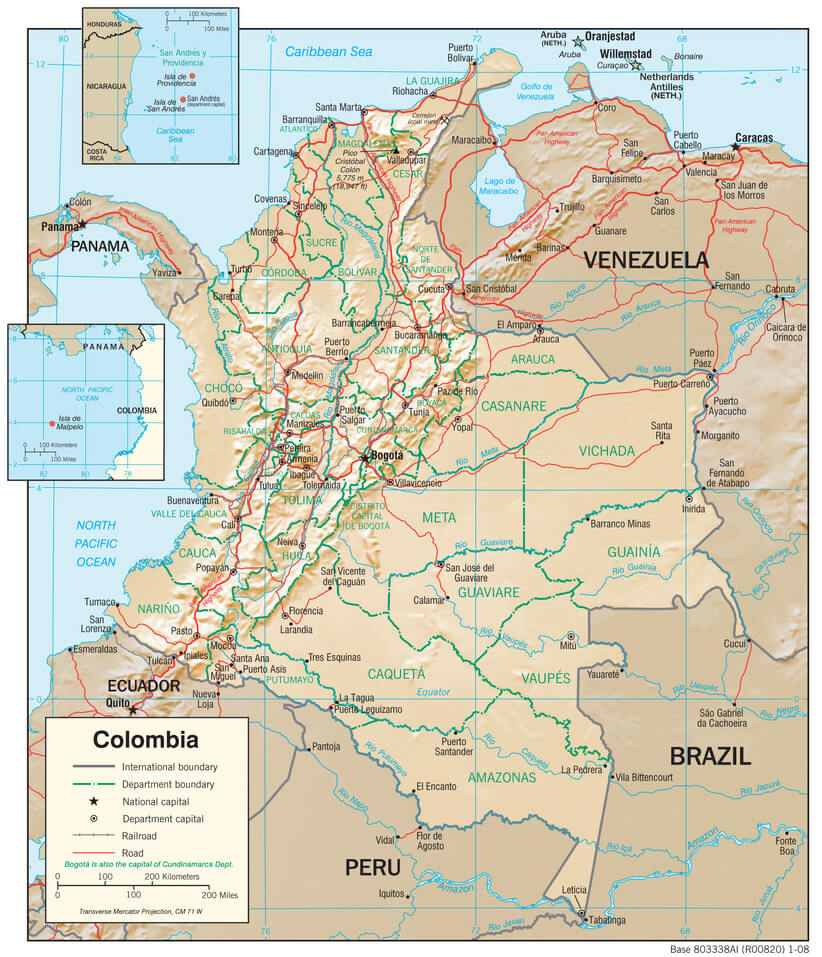
A physiographic map of Colombia.
Significant Water Bodies of Colombia
Major River Systems
Amazon Basin:
- Amazon River - 116 km (72 mi) along Colombian border with Peru/Brazil; part of the world's largest river system
- Caquetá River (Japurá) - 2,280 km (1,420 mi); longest river entirely within Colombia; flows through Caquetá and Amazonas departments
- Putumayo River - 1,813 km (1,127 mi); forms border with Ecuador and Peru; drainage area 148,000 km² (57,000 sq mi)
- Guaviare River - 1,350 km (839 mi); flows from the Eastern Cordillera through the Meta, Guaviare, and Vichada departments
- Vaupés River - 1,050 km (652 mi); shared with Brazil; flows through the Vaupés department
- Apaporis River - 1,000 km (621 mi); tributary of Japurá; flows through Vaupés and Amazonas departments
- Caguan River - 618 km (384 mi); tributary of Caquetá; flows through Huila and Caquetá departments
- Orteguaza River - 545 km (339 mi); tributary of Caquetá; located in the Caquetá department
Magdalena-Cauca System:
- Magdalena River - 1,540 km (957 mi); drainage area 273,000 km² (105,000 sq mi); flows from Huila to the Caribbean Sea
- Cauca River - 1,350 km (839 mi); drainage area 63,300 km² (24,400 sq mi); flows through Valle del Cauca, Antioquia, and Bolívar
- Bogotá River - 375 km (233 mi); flows through Cundinamarca and Bogotá; heavily polluted urban waterway
- Sogamoso River - 509 km (316 mi); flows through Santander; major tributary of the Magdalena
- Lebrija River - 177 km (110 mi); located in Santander; joins the Sogamoso River
- San Jorge River - 368 km (229 mi); flows through Córdoba; connects to Magdalena via Cauca
- Nechí River - 553 km (344 mi); flows through Antioquia; major tributary of Cauca
- Porce River - 170 km (106 mi); flows through Antioquia; multiple hydroelectric dams
Orinoco Basin:
- Orinoco River - 266 km (165 mi) along Colombian-Venezuelan border; total length 2,140 km (1,330 mi)
- Meta River - 1,200 km (746 mi); drainage area 113,000 km² (44,000 sq mi); flows through Meta, Casanare, Vichada
- Arauca River - 1,050 km (652 mi); forms border with Venezuela; flows through the Arauca department
- Casanare River - 590 km (367 mi); flows through the Casanare department; supports the petroleum industry
- Vichada River - 700 km (435 mi); flows through the Vichada department, a sparsely populated region
- Tomo River - 685 km (426 mi); flows through Vichada; tributary of the Orinoco
- Cravo Sur River - 266 km (165 mi); flows through Casanare; tributary of Meta
Pacific Drainage:
- Atrato River - 750 km (466 mi); drainage area 35,000 km² (13,500 sq mi); flows through Chocó to the Gulf of Urabá
- San Juan River - 380 km (236 mi); flows through Chocó; important for mining activities
- Baudó River - 375 km (233 mi); flows through Chocó, a high biodiversity region
- Patía River - 400 km (249 mi); flows through Cauca, Nariño; empties into the Pacific Ocean
- Mira River - 350 km (217 mi); shared with Ecuador; flows through Nariño
- Telembí River - 200 km (124 mi); tributary of Patía; located in Nariño
- Saija River - 180 km (112 mi); flows through Cauca; Pacific coastal drainage
- Micay River - 180 km (112 mi); flows through Cauca; supports Afro-Colombian communities
Caribbean Drainage:
- Sinú River - 415 km (258 mi); drainage area 13,700 km² (5,300 sq mi); flows through Córdoba, Sucre
- Cesar River - 280 km (174 mi); flows through the Cesar department, between the Sierra Nevada and the Serranía de Motilones
- Ranchería River - 248 km (154 mi); flows through La Guajira; crucial water source in an arid region
- Fundación River - 120 km (75 mi); flows from the Sierra Nevada de Santa Marta to the Caribbean Sea
- Ariguaní River - 170 km (106 mi); flows through the Cesar and Magdalena departments
Major Lakes and Lagoons
Natural Lakes:
- Laguna de Tota - 56 km² (22 sq mi); elevation 3,015 m (9,892 ft); Boyacá department; largest high-altitude lake
- Laguna de la Cocha/Guamués - 40 km² (15 sq mi); elevation 2,760 m (9,055 ft); Nariño department; endemic species habitat
- Laguna de Fúquene - 30 km² (12 sq mi); elevation 2,540 m (8,330 ft); Cundinamarca/Boyacá border; important wetland
- Laguna de Suesca - 3 km² (1.2 sq mi); elevation 2,584 m (8,478 ft); Cundinamarca; recreational area
- Laguna del Otún - 1.5 km² (0.6 sq mi); elevation 3,950 m (12,959 ft); Risaralda; glacial origin lake
Coastal Lagoons and Wetlands:
- Ciénaga Grande de Santa Marta - 4,280 km² (1,653 sq mi); Magdalena department; largest coastal lagoon complex
- Laguna de Pajarales - 900 km² (347 sq mi); part of the Ciénaga Grande system; important bird habitat
- Laguna del Navío Quebrado - 150 km² (58 sq mi); connected to Ciénaga Grande; fishing community support
- Ciénaga de Zapatosa - 310 km² (120 sq mi); shared by Cesar and Magdalena departments; seasonal flooding
- Ciénaga de Ayapel - 145 km² (56 sq mi); Córdoba department; connected to San Jorge River
- Ciénaga de Lorica - 158 km² (61 sq mi); Córdoba department; important fishery
- Laguna de Sonso - 20 km² (8 sq mi); Valle del Cauca; wildlife sanctuary
Major Reservoirs
Hydroelectric Reservoirs:
- Embalse de Betania - 7,400 hectares (18,300 acres); Huila department; 540 MW capacity
- Embalse del Peñol-Guatapé - 6,200 hectares (15,300 acres); Antioquia department; 560 MW capacity; major tourist attraction
- Embalse de Chivor - 1,220 hectares (3,014 acres); Boyacá department; 1,000 MW capacity; pumped storage
- Embalse de Urra I - 4,450 hectares (11,000 acres); Córdoba department; 340 MW capacity; Sinú River regulation
- Embalse de Salvajina - 2,274 hectares (5,621 acres); Cauca department; 285 MW capacity; Cauca River
- Embalse de Calima - 1,978 hectares (4,886 acres); Valle del Cauca department; water supply and recreation
- Embalse de Topocoro - 1,120 hectares (2,767 acres); Santander department; 300 MW capacity
- Embalse de Riogrande II - 1,240 hectares (3,063 acres); Antioquia department; 170 MW capacity
- Embalse de La Miel - 870 hectares (2,149 acres); Caldas department; 396 MW capacity
- Embalse de Jaguas - 3,400 hectares (8,402 acres); Antioquia department; 170 MW capacity
Coastal Waters
Caribbean Coast:
- Golfo de Urabá - 3,000 km² (1,158 sq mi); shared with Panama; Atrato River delta; important port region
- Bahía de Cartagena - 84 km² (32 sq mi); Bolívar department; major commercial port and tourist destination
- Golfo de Morrosquillo - 1,200 km² (463 sq mi); Sucre and Córdoba departments; fishing and tourism
- Bahía de Santa Marta - 25 km² (10 sq mi); Magdalena department; deepwater port; Sierra Nevada proximity
- Golfo de Venezuela - 17,840 km² (6,888 sq mi) total; shared with Venezuela; La Guajira access
Pacific Coast:
- Bahía de Buenaventura - 1,200 km² (463 sq mi); Valle del Cauca department; Colombia's main Pacific port
- Golfo de Tribugá - 800 km² (309 sq mi); Chocó department; high biodiversity; whale watching area
- Bahía Málaga - 135 km² (52 sq mi); Valle del Cauca department; national park; humpback whale breeding
- Ensenada de Utría - 54 km² (21 sq mi); Chocó department; national park; pristine mangrove ecosystems
- Bahía Solano - 45 km² (17 sq mi); Chocó department; ecotourism destination; sportfishing
